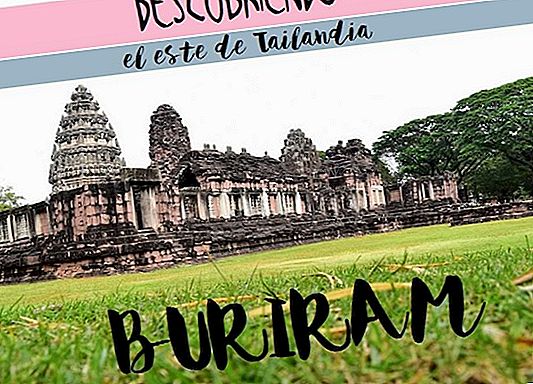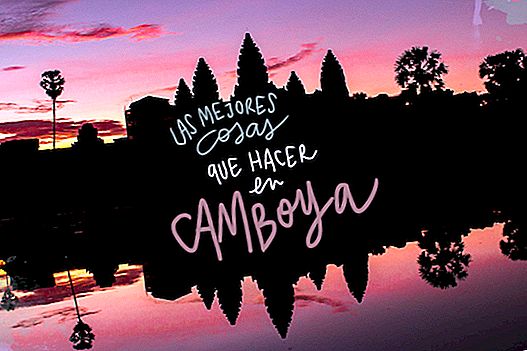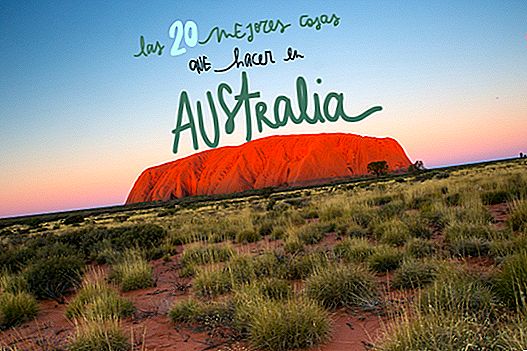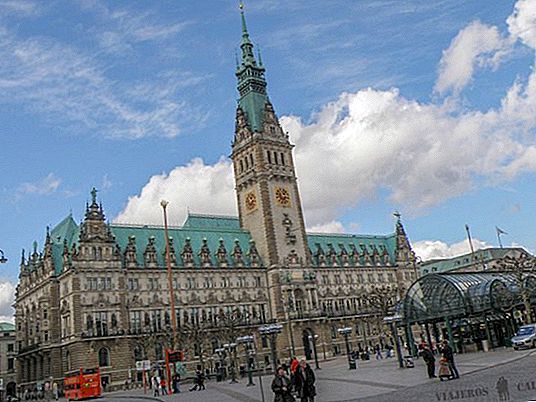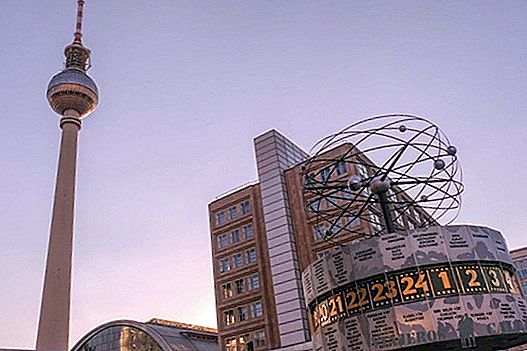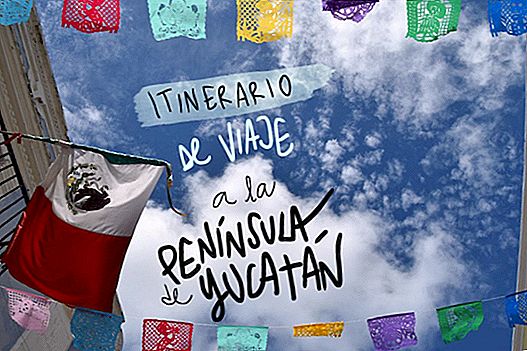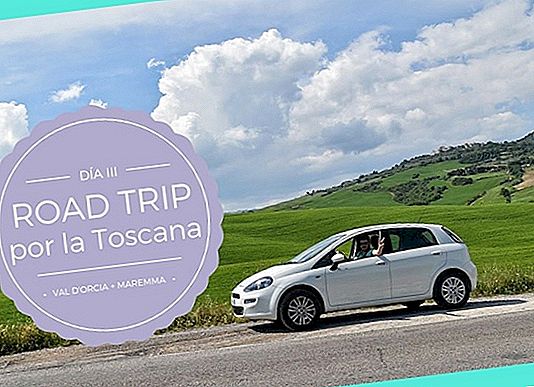
Third day of ourroute through Tuscany by car, and what day! Perhaps the most complete of all. In the travel from Montepulciano to Sorano the most beautiful landscapes of all of Tuscany would wait for us, natural hot springs with formations that look like from another planet, cities hanging from the sky, enchanted rooms in fortresses and mysterious roads carved in rock ... it doesn't look bad, right? If you want to know more, keep reading that we explain everything to you.
The day began as these road trip days begin: early and with a good breakfast. Taking strength and not losing a moment are fundamental rules to make the most of the day on the road. We roll and roll and roll ...
And what we find are the most beautiful landscapes of all of Tuscany on the stretch between Montepulciano and Castiglione d'Orcia. Those typical green fields dotted with the colors of the flowers in the middle of spring, with the hamlets on top of the hills from which trails are born that wind up the slopes with perfect rows of cypresses or pines on both sides. Much talk ... it is best to see it yourself, look:
We passed byMonticchiello and we get to Bagno Vignoni, a tiny medieval town famous for its hot springs. At the heart of it is Piazza delle Sorgenti, a square-shaped pool with more than 5 centuries old, where a source of volcanic hot springs is born. The bathroom is not allowed but the visit is worth it (be careful, do not put the swimsuit that we have prepared a surprise for you).
Bagno Vignoni was already a town famous for its hot springs at the time of the Etruscans and the Romans. Later he had more notoriety thanks to the proximity to the Via Francigena, so many pilgrims on the way to Rome took advantage of these waters to relax their muscles and revitalize their spirit.
Cerquita is located Castiglione d'Orcia, with its imposing Rocca di Tentennano, an elevated bastion at the top of the hill that was the protagonist of numerous disputes between families for taking over its power given its strategic character over the entire territory. If you have time and have not yet had breakfast, Castiglione d'Orcia can be a good place to do it and take a quiet walk. We photograph it from a distance, we have no time to lose.
What comes next is one of the star points of the trip. It is none other than Terme Libere di San Filippo. It is a birth of hot springs that creates natural pools where you can take a bath freely. However, the jewel of this place is the Balena Bianca waterfall, a white limestone rock (due to its high calcium content) where water erosion has formed different levels with small pools and pools. Don't be afraid to climb the whale, even the grandmothers do it and the reward is endless! And if you don't look at this as it was ...
Eye, do not be confused of place, these hot springs are natural and free entry (at the moment), in the surroundings other thermal baths have been built with relaxation treatments, spa, beauty, etc ...
The road keeps going through Radicofani, another medieval town elevated on top of a hill with some interesting visits, from where we say CIAO to the Val d'Orcia region to enter the Maremma. And we could not do it better, the next stop is one of those places for which you know it is worth the trip just to the naked eye: Pitigliano.
TO Pitigliano it is known asLittle Jerusalem, for the presence of the Hebrew community for centuries, even today you can visit your Jewish ghetto and its synagogue, in the historic center of the city.
But what really impresses about this place is its location: this large inhabited fortress was built on top of a cliff, creating a visual effect where it seems that everything is part of a single rock. Behind the walls of this fortification an authentic labyrinth of narrow streets opens, where it is easy to free the mind in time and land in the convulsive struggles between powerful Florentine families, such as the Medici or the Orsini.
Although the dimensions of its streets do not give for great architectural displays, the Duomo, a handful of churches, the synagogue and its small ghetto and palaces such as the Orsini, the Comunale and the Salvini Theater annex stand out.
This is a good place to eat, although prices are somewhat more expensive than elsewhere, the offer is quite wide. We wait for the next stop and almost stay on an empty stomach!
And finally we arrived at our corner, the place that surprised us the most, the best kept secret of Tuscany: Sorano. It is called the Matera of Tuscany, for its rock excavations in the stone, similar to Sassi di Matera in southern Italy. But Sorano is much more than that! This medieval citadel retains a different historical center from the rest of the Tuscan villages. This, instead of developing around one or two main roads, it does it from top to bottom, from the fortress to the Lente river, so the labyrinth of streets is much wider and networked.
The history of Sorano has been linked to its neighbor and more powerful Pitigliano and Florentine families, however its origins must be sought in the surrounding Etruscan settlements. And here comes one of the surprises of the trip ... le vie cave!
Around Sorano there are several of these roads, one of the most impressive is found on the hike that goes up to the Parco di San Rocco, a promontory that rises in front of Sorano and from where there are magnificent panoramic views. On the way there are also magnificent caves carved into the stone, some of them with religious carvings. In the useful info we talk about how to climb the Parco di San Rocco.
The compact historic center of Sorano also hides some interesting buildings, such as the Masso Leopoldino that you can climb, the Jewish ghetto, the doors of dei Merli and di Sopra, some palaces and churches and the huge Orsini Fortress, where you have the possibility of stay ... From one of its rooms we embrace the charming Sorano with the last rays of sun ...
Useful information
:: Sites through which the route passes
Montepulciano, Monticchiello, Bagno Vignoni, Castiglione d'Orcia, Terme Libere di San Filippo, Radicofani, Pitigliano and Sorano.
:: Kilometres:125km approximately.
:: How to get to the Free Baths of San Filippo?
The detour is marked on the road. Once you reach the town you can park at the end of the main road or on the right side of it, it depends on the amount of cars. Then walk back on your steps and on the left hand side there is a path that goes down to the hot springs. It is marked with the “Fosso Bianco” sign. Admission is free. Do not stay in the first pools, because the fat dish is at the end, with the White Whale waterfall.
:: Path to the San Rocco Park
The road begins by crossing the Puerta dei Merli, in the lower part of the town. From there begins a path that first crosses the bridge over the river and then follow the indications of "Vie Cave". It is a climb through the via cava di San Rocco by paths carved in the rock, several interesting caves and excavations are seen. Upon reaching the chapel, it surrounds itself and continues along its back for about 100 meters to the viewpoint. The journey takes about 20-25 minutes (it is less than 1 km).
If you want to go by car you have to leave Sorano towards Sovana. A few kilometers to the right is a parking lot for 5-7 cars. It is about 50 meters from the chapel and about 150 meters from the viewpoint.
:: Where to sleep in Sorano?
We slept one night at the Hotel della Fortezza, in the same building of the Fortezza Orsini in Sorano. The truth is that it is a pass, not only because of being in a place with some historical importance, but also because of the privileged views of the entire town.
:: Where to park for free in Pitigliano?
The town is divided into two parts, the historic center with limited traffic and the modern town, where there are free parking areas, but also paid parking and blue areas. We parked first in a blue zone, in Via dell'Unitá D'Italia, but then we continued further ahead and just in the curve to the left before the cemetery there were a couple of places to park for free.
:: Where to park for free in Sorano?
In the parking lot next to the fortress there are many spaces and it is free. It is in the upper part of the town, to then reach the historic center walking you have to go through the fortress.
:: Where to eat in Sorano?
There are very few places to choose from, we ate at the Fidalma restaurant in the same historical center, average prices pulling high (but affordable if you do not go hand in hand) and for dinner we caught some pizzas to take in the restaurant Il Talismano, prices of the pizzas between € 6 and € 7. They make a 10% discount if you stay at the hotel della Fortezza and stay to eat there.
In the square of the commune of Sorano there is a typical village cafe with a terrace under some very quiet vines. In addition, coffee and candy prices are cheap.
:: Other articles on the Road Trip through Tuscany

